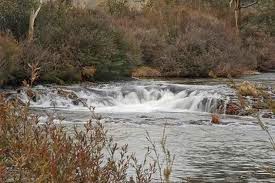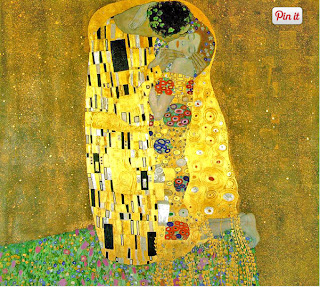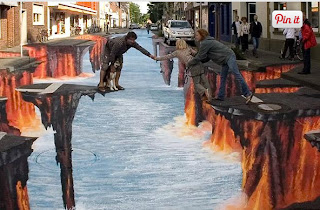In the second picture i was drawn to the emotion displayed in the little boys faces. Seeing the dirty environment they are in made my heart break.
Thursday, December 12, 2013
Self Portrait And Portrait Preview
In the second picture i was drawn to the emotion displayed in the little boys faces. Seeing the dirty environment they are in made my heart break.
Wednesday, December 4, 2013
The Three Pillars of Exposure: Aperture,ISO, Shutter Speed
Aperture
F2.8
f16
2. The smaller the aperture, the higher the aperture f-number.
3. The higher the aperture f-number the sharper the background comes out with the picture.
Shutter Speed
Shutter Speed
high shutter speed
low shutter speed
1. a.) the dunking booth- fast shutter speed
b.) the food eating contest- slow shutter speed
c.) the rock climbing wall- medium shutter speed
d.) someone working at the both- slow shutter speed
e.) the DJ working at the middle of the circle- slow shutter speed
f.) the diamonds performing- high shutter speed
a.) the dunking booth- medium
b.) the eating contest- slow
c.) the rock climbing wall- slow
d.) someone working the booth- slow
e.) the DJ working at the middle of the circle- slow
f.) the diamonds performance- medium
2. Aperture Priority- you set how much light you let in, but the camera sets how fast it allows the light to travel thew.
Shutter Priority- you decide how fast the light travels threw while the camera picks how much light to let in.
Manual- you get to pick both how much light travels in and how fast it goes threw.
ISO
200
3200
1. You have a better chance on capturing the action thats going on, because its taking the picture faster.
2. He suggested a low ISO works better in the day.
3. The author said that a high ISO works better in the night.
F4- looks better at 1/125 sec- background is blurred but the picture is bright and clear.
F5.6- 1/125 looked the best the background was blurred and picture looked good
F8- 1/60 looked best the background isn't as blurred.
F11- 1/30 the picture is a little blurry.
F16- 1/30 the picture is a little under exposed but is well focused.
F22- 1/8 the picture and background was clear.
Monday, December 2, 2013
Caption Writing
2. Jenna Huma prays for a miracle on June 25 on the rough ground in Abeche, Chad.
3. James Walker saves a baby from a house fire friday morning in Orange County.
4. Jaime Cruz jumps out of one of the trait centers building in the morning of 9/11 in New York.
5. Jessica crys for help early morning in the middle of the street by Trin University in Vermont. Screaming for her loss by the top of her lungs.
Monday, November 4, 2013
Wednesday, October 23, 2013
Great Black and white Photographers Part 3
1. The first thing that caught my eye about this photo was the angle it was shot at. I really liked how suspicious the tree makes the house look.
2. I see the clumpy mold growing on the light pole. i smell the dryness in the air. I hear the the brush of abandonment. I taste bitterness. I feel alone.
1. The unique shape of the tree is what really drew me to the picture. I've never seen anything like it and the photographer did a grate job one displaying simplicity.
2. I see an old persons wrinkly hand. The sense of aging is in the air. I hear the cracking of the tree. i taste bits of crumbled soil. I feel useless.
2. I see the clumpy mold growing on the light pole. i smell the dryness in the air. I hear the the brush of abandonment. I taste bitterness. I feel alone.
1. The unique shape of the tree is what really drew me to the picture. I've never seen anything like it and the photographer did a grate job one displaying simplicity.
2. I see an old persons wrinkly hand. The sense of aging is in the air. I hear the cracking of the tree. i taste bits of crumbled soil. I feel useless.
Mural Preview
1. A theme I could use for my moral is Academies. I would take pictures of each academy and show what it has to offer.
2.This theme is worth devoting time to because it shows how many different opportunities Akins has to offer. It could help students realize that there are many careers out there to choose them and Akins has just what they need to prepare us for the future.
3. An advantage of using a phone camera is that its portable and we can pull it out whenever its needed. a disadvantage of using a phone camera is that not all phone cameras have the best quality.
4. The advantage of using a SLR camera is that it has many properties to use and is made to take to best quality photos.
5. We should use SLR camera for this project because its more professional and is way better quality, cause some people don't even have phones.
2.This theme is worth devoting time to because it shows how many different opportunities Akins has to offer. It could help students realize that there are many careers out there to choose them and Akins has just what they need to prepare us for the future.
3. An advantage of using a phone camera is that its portable and we can pull it out whenever its needed. a disadvantage of using a phone camera is that not all phone cameras have the best quality.
4. The advantage of using a SLR camera is that it has many properties to use and is made to take to best quality photos.
5. We should use SLR camera for this project because its more professional and is way better quality, cause some people don't even have phones.
Monday, October 21, 2013
AFRICA
When i saw the power point all i could say was "WOW!" I loved every single picture, so it was hard to pick my favorite. I ended up choosing the picture above,which shows a mother cheetah with her three cubs laying on a rock. This picture is my favorite because i love the unity and the background really just pulls it together. In this picture it shows the balance rule between the two little cubs in the left corner.
2. To show the being of the animals, before there are no longer here.
3. His hope is to show how beautiful animals are and how we should protect them.
4. "The photos are my elegy to these beautiful creatures, to this wrenchingly beautiful world that is steadily, tragically vanishing before our eyes."
Thursday, October 17, 2013
Academic Shoot Reflection
- This whole shoot was probably the hardest shoot I've ever done. It was really hard to find the rules in a learning environment, being the photographer I had to be very creative.
- While i was shooting i tried holding the camera in different angles. When doing this i would see something in a whole different way just by changing the angle i shot it in.
- If i could do this shoot again, I would pick better environments where the rules are better shown. I also would be more aware and not just take sloppy pictures that didn't represent the rules properly.
- I don't think I would do much of the same thing I did, because i think i did a pretty horrible shoot.
- The next time I go out I think that simplicity and balance would be the easiest rules to achieve.
- The hardest rule to capture would be the rule of thirds.
- The Rule Of Thirds is the hardest rule for me to understand. To fix this I could do more research on the rule and look at examples.
Academic Shoot
SIMPLICITY
I followed the rule pretty well,but it would have been better if the background was clearer.
The subject in this photograph is the guy in the green shirt painting. The subject is very clear to the people looking at my photo because he's the only one in it.
AVOIDING MERGERS
It is way easier to take a bad picture compared to a good picture, as shown in the picture above. There are many subjects, but in the left corner you see a girl poring white paint, and it looks like the girl behind hers nose. The subject isn't really clear.
BALANCE
This photo signifies balance well, because the human body is naturally balanced. Also the book is balanced too.The photographs subject is the guy in the stripped shirt reading a book. It is very clear that he his the subject, he's nice and centered.
RULE OF THIRDS
I did okay on this rule,rule of thirds is the hardest for me to understand. The subject in the photo is the guy in the right corner, which should be clear to the viewers.
FRAMING
For framing i think i did good, but i could've done better. The subjects are the students and the computers, which are being framed by the wooden desks.
Lines is personally my favorite rule to take pictures of, but this isn't the best picture. The students are sitting in their desk, which are formed in a line. I could've taken a picture where the lines actually lead somewhere.
Wednesday, October 2, 2013
Academics/ Community Service
The Story
This photo visually shows a group of teens feeding the homeless hot dogs.
Action and Emotion
In this picture Two students are playing with the teacher and being silly!
Filling the Frame
The frame is filled with the two guys,darkness, and the purple gas.
Favorite Picture
I chose this photograph because i really like the bird point of view it was taken in. There is a nice show of lines on the sides with the books, and balance.
1. I think i could take photos like these in a science, reading, or an art classroom.
2.Im really not familiar with most teachers at akins so i don't know what teachers i would go to.
3. To get photos like these i would take photos at different angles and up close.
Monday, September 30, 2013
Elements of Art Principles of Design
Lines- are marks made by a pointed tool: brush, pencil, pen, etc. Lines can vary in width, direction, curvature, length, or color.
Shapes- are formed wherever the ends of a continuous line meet. Geometric shapes such as circles, triangles or squares have perfect, uniform measurements and don't often appear in nature. Organic shapes are associated with things from the natural world, like plants and animals.
Color- Color wheels show the primary colors, secondary colors, and the tertiary (intermediate) colors. They also show the relationships between complementary colors across from each other, such as blue and orange; and analogous (similar or related) colors next to each other such as yellow, green, and blue. Black and white may be thought of as colors but, in fact, they are not. White light is the presence of all color; black is the absence of reflected light and therefore the absence of color.
Value (Tone)- refers to dark and light; the value scale refers to black and white with all gradations of gray in between. Value contrasts help us to see and understand a two-dimensional work of art.
Form- describes objects that are three-dimensional, having length, width, and height.
Texture- can be rough, bumpy, slick, scratchy, smooth, silky, soft, prickly--the list is endless. Texture refers to the surface quality, both simulated and actual, of artwork.
Space- refers to distances or areas around, between, or within components of a piece. Space can be positive (white or light) or negative (black or dark), open or closed,shallow or deep, and two-dimensional or three-dimensional.
PRINCIPLES OF DESIGN
Balance-is the comfortable or pleasing arrangement of things in art. There are three different types of balance: symmetrical, asymmetrical, and radial. The human figure is symmetrically balanced; the same on the left and right side. The tree is asymmetrically balanced; its branches are not distributed equally on each side, but their total weight is balanced left and right. The sun is an example of radial balance; all its rays are equal in length from the center.
Contrast is created by using elements that conflict with one another. Often, contrast is created using complementary colors or extremely light and dark values. Contrast creates interest in a piece and often draws the eye to certain areas. It is used to make a painting look interesting.
Emphasis- in the focal area of an artwork gives it importance. An artist may stress some elements of the design over others. The eye of the viewer will focus on the area of emphasis or center of interest first, then take in the rest of the composition.
Movement- in an artwork means the artist is taking viewers on a trip through the work by means of lines, edges, shapes, and colors often leading to the focal area. Movement is a visual flow through the composition. It can be the suggestion of motion in a design as you move from object to object by way of placement and position. Directional movement can be created with a value pattern. It is with the placement of dark and light areas that you can move your attention through the format.
Patterns- are made in art when the same shapes or elements are repeated again and again. Pattern uses the elements of art in planned or random repetitions to enhance surfaces of paintings or sculptures.
Rhythm- is the repetition of shapes, lines, and forms. Rhythm is a movement in which some elements recurs regularly. Like a dance, it will have a flow of objects that will seem to be like the beat of music.
Unity- means that all elements in an artwork are in harmony. Unity brings together a composition with similar units. For example, if your composition was using wavy lines and organic shapes you would stay with those types of lines and not put in even one geometric shape.
Shapes- are formed wherever the ends of a continuous line meet. Geometric shapes such as circles, triangles or squares have perfect, uniform measurements and don't often appear in nature. Organic shapes are associated with things from the natural world, like plants and animals.
Color- Color wheels show the primary colors, secondary colors, and the tertiary (intermediate) colors. They also show the relationships between complementary colors across from each other, such as blue and orange; and analogous (similar or related) colors next to each other such as yellow, green, and blue. Black and white may be thought of as colors but, in fact, they are not. White light is the presence of all color; black is the absence of reflected light and therefore the absence of color.
Value (Tone)- refers to dark and light; the value scale refers to black and white with all gradations of gray in between. Value contrasts help us to see and understand a two-dimensional work of art.
Form- describes objects that are three-dimensional, having length, width, and height.
Texture- can be rough, bumpy, slick, scratchy, smooth, silky, soft, prickly--the list is endless. Texture refers to the surface quality, both simulated and actual, of artwork.
Space- refers to distances or areas around, between, or within components of a piece. Space can be positive (white or light) or negative (black or dark), open or closed,shallow or deep, and two-dimensional or three-dimensional.
PRINCIPLES OF DESIGN
Balance-is the comfortable or pleasing arrangement of things in art. There are three different types of balance: symmetrical, asymmetrical, and radial. The human figure is symmetrically balanced; the same on the left and right side. The tree is asymmetrically balanced; its branches are not distributed equally on each side, but their total weight is balanced left and right. The sun is an example of radial balance; all its rays are equal in length from the center.
Contrast is created by using elements that conflict with one another. Often, contrast is created using complementary colors or extremely light and dark values. Contrast creates interest in a piece and often draws the eye to certain areas. It is used to make a painting look interesting.
Emphasis- in the focal area of an artwork gives it importance. An artist may stress some elements of the design over others. The eye of the viewer will focus on the area of emphasis or center of interest first, then take in the rest of the composition.
Movement- in an artwork means the artist is taking viewers on a trip through the work by means of lines, edges, shapes, and colors often leading to the focal area. Movement is a visual flow through the composition. It can be the suggestion of motion in a design as you move from object to object by way of placement and position. Directional movement can be created with a value pattern. It is with the placement of dark and light areas that you can move your attention through the format.
Patterns- are made in art when the same shapes or elements are repeated again and again. Pattern uses the elements of art in planned or random repetitions to enhance surfaces of paintings or sculptures.
Rhythm- is the repetition of shapes, lines, and forms. Rhythm is a movement in which some elements recurs regularly. Like a dance, it will have a flow of objects that will seem to be like the beat of music.
Unity- means that all elements in an artwork are in harmony. Unity brings together a composition with similar units. For example, if your composition was using wavy lines and organic shapes you would stay with those types of lines and not put in even one geometric shape.
Subscribe to:
Posts (Atom)



































































